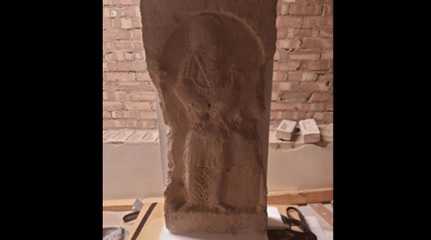
26 June 2023; MEMO: Iran's chargé d'affaires to the UK has announced that London has returned a third-century rock relief sculpture to the Islamic Republic, which had been smuggled out of the country in 2016.
In a tweet on Friday, Mehdi Hosseini Matin said that the Iranian embassy had received the ancient artefact, which dates back to the Sassanid Empire (224-641 CE), after it had been on display at the British Museum for three months.
"The statue of the Sassanid soldier, which had been smuggled into Britain, was displayed temporarily at the British Museum for three months after Iran's ownership was proven," Matin stated.
"Today, the precious ancient work was officially delivered to the embassy of the Islamic Republic of Iran in London. God willing, it will be sent soon to the beloved homeland."
According to PressTV, the relic is thought to have been gouged from a cliff in today's Iran and depicts a bearded man presumed to be a Sassanid soldier.
READ: Iraq recovers looted artefact from Italy
In April, it was reported that the antiquity had been seized by the British border police on 16 January, 2016 at London's Stansted Airport and that Iran was forced to take up a legal fight in British courts to prove that it owns the relief.
"This relief had not been registered in Iran's National Museum and it is clear that it has been smuggled out of the country illegally," Matin said a day after the Guardian broke the news that the rock relief was destined for the British black market when it was seized, with a value of over $40 million.
Experts believe the previously unrecorded relic is carved from a calcareous limestone, which is found across Iran. There are only about 30 known Sasanian rock reliefs in existence, with most dating to the third century. Almost all are in a relatively small part of Iran, in their ancestral homeland of Fars province. The Sassanid Empire was the last pre-Islamic Persian empire before the early Muslim conquests of the 7th–8th centuries CE.




